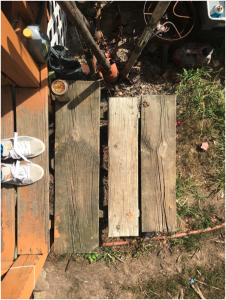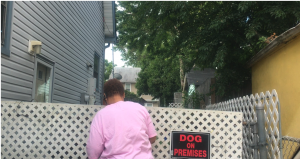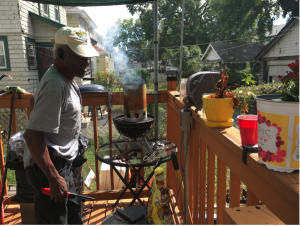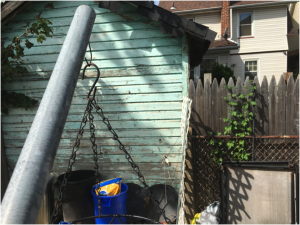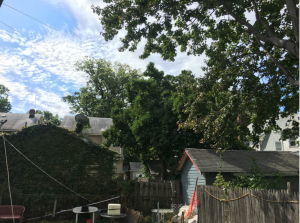Author Archives: Ayanna Costley
Lehigh Valley Story Pitch- Center City Thrift
Working Title: Center City Thrift
Logline: A small Allentown thrift store offers a unique, but necessary service for the city.
As mentioned in one of my previous posts, I’m interested in creating a documentary on the Center City Thrift Shop in Allentown. Center City Thrift Shop is seen by many to just be a thrift store, when in fact the store’s initiatives supports the only community wireless (wifi) network in the Lehigh Valley. This brings to question why this initiative (free wifi for the community) is even needed. I think exploring this place in the Lehigh Valley will help tell a story about not only the thrift store itself, but also the people behind the program and more importantly, the surrounding community that benefits from it. Broadly, the short documentary would nuance the differences in experiences between those with a higher socio-economic status and those with a lower SES in the Lehigh Valley, and how while these people’s experiences can be vastly different, they could be living minutes away from each other in different town sections.
Reflection on 9/4’s class
Last class definitely felt like a game show challenge. We were tasked on the spot to create a 60-90 seconds documentary with a group of people we didn’t know. I didn’t think the project would be super difficult, until five minutes in and my group’s microphones weren’t working. While we worked on that, we hit the ground running in terms of brainstorming ideas. At first, we all agreed to do a story on pets, but Andrea then suggested we try to do a politics story, specifically on DACA. It was cool seeing how fast we set up the equipment and our setting (the studio), and how we all pitched and revised ideas for how we would tell our story. We each had different strengths (coming up with ideas, using the cameras/microphones, editing, etc) but in the process of quickly finishing our doc, we challenged each other to be involved with the steps and learn from each other. Overall, I think our group worked extremely well together and was able to produce a piece we were proud of, given the time constraints. I think the final pieces of other groups also reflected their hardwork and creativity, especially the different approaches to the pets topic.
Making #1 A story using stills
Framing the World
As I prepared to start the framing assignment, I made a plan. I would walk from the College’s library on Chew Street, pass the cemetery, and turn right on N 17th Street toward the Allentown Fair, and then once the 30 minutes finished, I would take the same path back to my dorm. I soon abandoned the plan and instead turned on to North St George Street because the smell of the Fair’s animals was too distracting. Sight wasn’t the only factor in how I was framing the world, and when I came to this conclusion, I was more willing to go with the flow and actually explore my surroundings. I saw couples walking together, kids playing on sidewalks and people sitting on their porches watching me watch them through a tiny frame. I saw lights: dim and flickering street lights, gold christmas lights, lights shining from TVs, neon lights from the fair’s amusement rides, and more. I thought of how I could use the light (for example, looking at the moon) or the artificial lights I saw to help establish what belonged in the frame. This led to the idea of being critical about how I decided to frame my sights. During the 30 minutes, I was hyper-aware of everything around me, but I had to question why I was framing the alley, for example, the way I was. Did it just look aesthetically pleasing, or was I making an analytical decision to frame my surroundings in whichever way? As Robert Coles mentions in his book Doing Documentary Work, our ‘location’, or who we are, informs what we see as worth noticing, documenting and ultimately sharing alongside other images. I also thought a lot abut how creating a frame is essentially setting boundaries on what we see, and that the boundaries we decide to set may and will be different from what someone else’s. Lastly, I considered how moving my frame even just an inch would shift the image inside of it and the relationship between details and the larger picture.
Academic Perspective and Subjectivity
I study Media and Communication and I’m minoring in Africana Studies. I approach issues or potential topics by thinking about the many stories that can and haven been told and how I could offer a new or nuanced perspective. I approach issues/topics/potential stories by doing research and using what I and to help compose the layers of whatever story I’m focusing on. I see the world as nuanced and if we study and highlight the nuances we see then we are able to understand ourselves a little more. I’m interested in exploring character (person, place, etc) driven stories that deal with identity or social justice, for example. If I were to tell a story about a place in the Lehigh Valley it would explore the Center City Thrift Shop in Allentown because it is seen by many to just be a thrift store, when in fact the store’s initiatives supports the only community wireless (wifi) network in the Lehigh Valley.
Documentarian
As a documentarian, I document what I see and feel is worth saving/sharing. I’m definitely a planner in some instances and enjoy the process of thinking about what I want to create, but I’ve learned that being spontaneous can yield unexpected+rewarding results. I try to remain aware of what/how I see things, and understand that this differs from other documentarians. I try to question myself about why I view the world in the the ways I do and why I decide to document and share it. I feel satisfied being able to be picky about what/how I want to document something.

